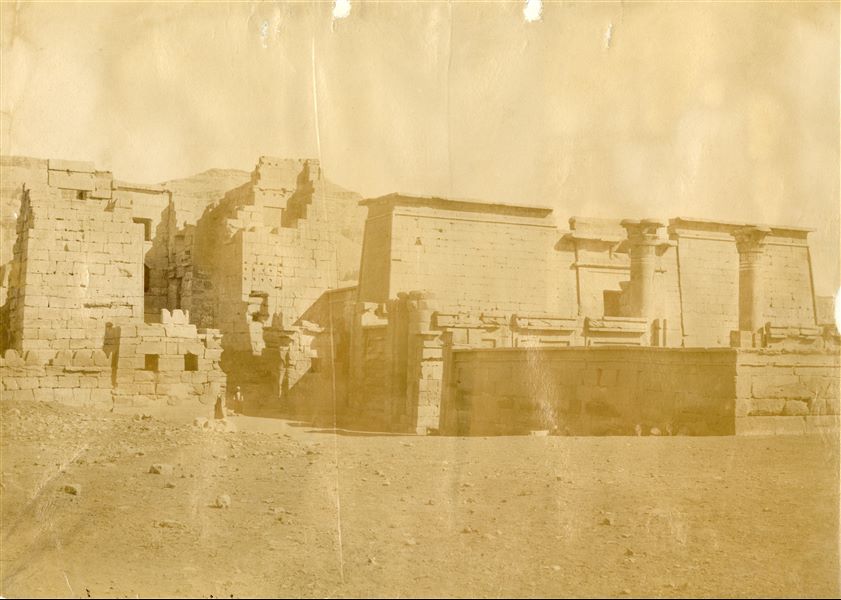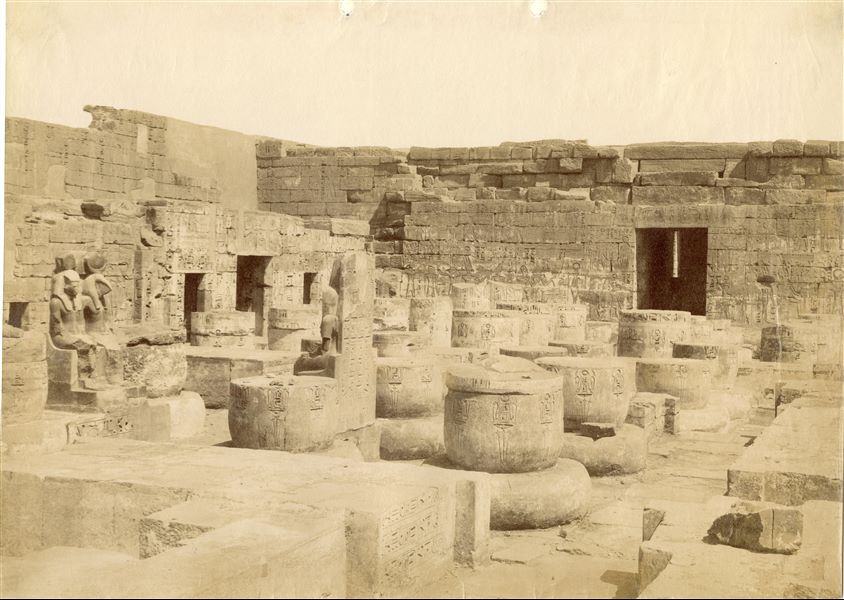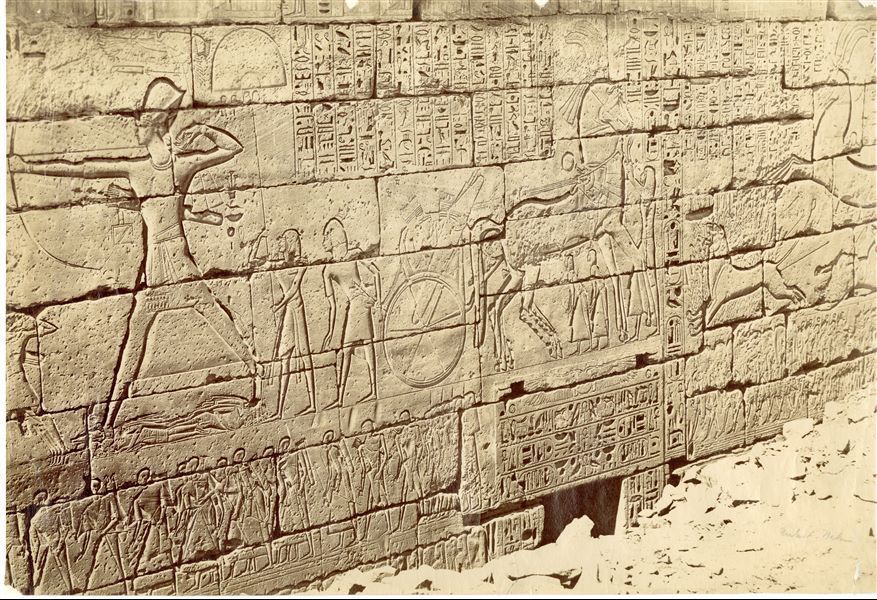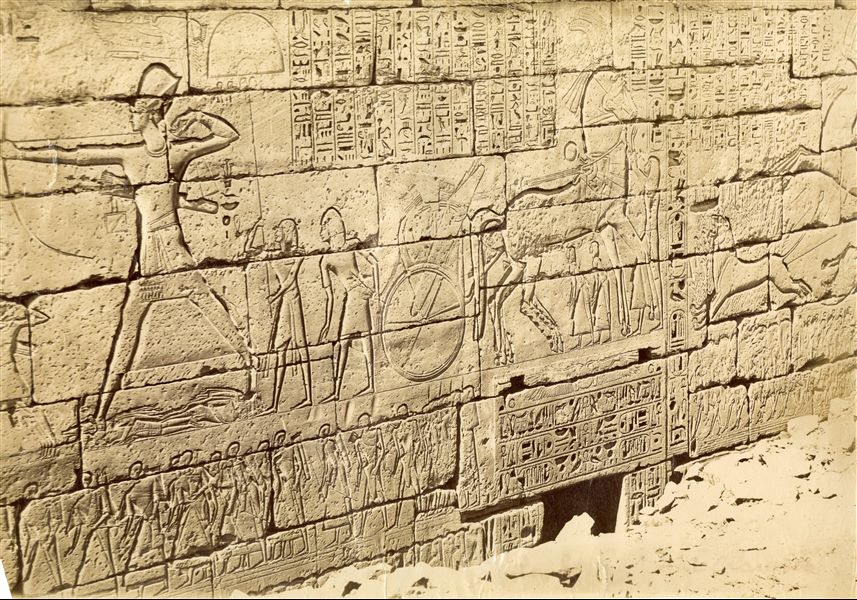The photograph depicts an overall view of the entrance to the Temple of Medinet Habu, built by Ramesses III. In particular, on the left is the migdol - the architectural structure reminiscent of a syrian fortress, while on the right, is the smaller temple from the 18th Dynasty, which was later incorporated into the Medinet Habu complex. The image can be attributed to Antonio Beato.
The photograph shows the south-western corner of the hypostyle hall of the Temple of Medinet Habu, built by Pharaoh Ramesses III, in west Thebes. The remains of the columns are visible and on the left, two pairs of divine statues (of one, only the back and profile of the deity can be seen), the side rooms and the axial door. The pylon can be glimpsed beyond the back wall. Based on the annotations on the back, the image can be attributed to Antonio Beato.
The shot offers a glimpse of the northern exterior wall decoration of the Temple of Medinet Habu, built by Ramesses III on the west bank of Thebes. Scene to the right of the naval battle. Subjects include the Pharaoh dressed as an archer shooting an arrow (left) at the Sea Peoples (not visible in this shot), the royal chariot with attendants taking care of the horses (centre) and a lion hidden in the desert vegetation shot by arrows (right). The lower part of the wall is still to be cleared, lying below the ground level. The shot can be attributed to Antonio Beato.
The image (like the previous one) offers a glimpse of the exterior wall decoration of the Temple of Medinet Habu, built by Ramesses III on the west bank of Thebes. Subjects include the Pharaoh dressed as an archer shooting an arrow (left) at the Sea Peoples (not visible in this shot), the royal chariot with attendants taking care of the horses (centre) and a lion hidden in the desert vegetation shot by arrows (right). The lower part of the wall is still to be cleared, lying below the ground level. The shot can be attributed to Antonio Beato. The photograph is slightly out of focus.



